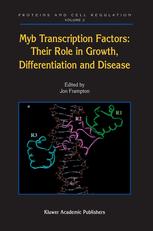

Most ebook files are in PDF format, so you can easily read them using various software such as Foxit Reader or directly on the Google Chrome browser.
Some ebook files are released by publishers in other formats such as .awz, .mobi, .epub, .fb2, etc. You may need to install specific software to read these formats on mobile/PC, such as Calibre.
Please read the tutorial at this link: https://ebookbell.com/faq
We offer FREE conversion to the popular formats you request; however, this may take some time. Therefore, right after payment, please email us, and we will try to provide the service as quickly as possible.
For some exceptional file formats or broken links (if any), please refrain from opening any disputes. Instead, email us first, and we will try to assist within a maximum of 6 hours.
EbookBell Team

4.1
60 reviewsThis volume represents the first collection of articles contributed by research leaders working on the Myb family of transcriptional regulatory proteins. In more than twenty chapters the authors discuss the range of biological processes and diverse cell types in which Myb proteins operate. Although concentrating on the three vertebrate Myb family members, homologues from lower species are also discussed because of the light they are able to shed on the evolution and function of these proteins. Individual chapters describe the involvement of Myb proteins, in particular c-Myb, in normal and diseased development and function of many tissues including haemopoietic cells, blood vessels, the gastrointestinal tract and the brain. Several chapters explore the mechanistic details of the action of Myb proteins, especially structural features, their interaction with DNA and other regulatory proteins, and the variety of genes that are regulatory targets for this group of transcription factors. This work will be of interest to those working directly in the field and also to the wider research community investigating the transcriptional regulation of development, differentiation and growth. The therapeutic potential of manipulating Myb function is also discussed making the book appealing to clinician scientists in several fields including haematology, oncology and cardiology.